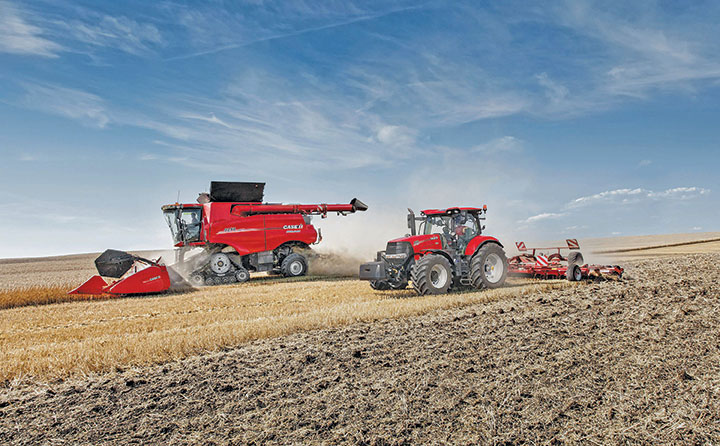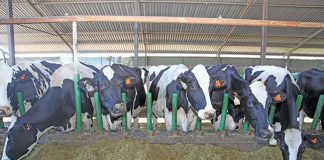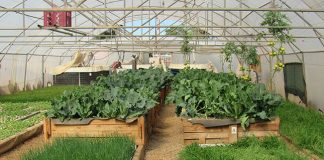
Photo: Case IH
In the article ‘Controlled Traffic Farming’, published in the Soil Biology journal series on soil engineering (2010), the system of controlled traffic farming is described as a concept that was developed to increase crop yield by reducing soil compaction.
“In controlled traffic farming (CTF), equipment is adapted so all field operations are supported from permanent traffic lanes to allow optimum production from wide, non-trafficked crop beds. In practice it means repeated use of the same wheel tracks for all operations using a precise machinery guidance system,” the article states.
According to precision farming specialist Ian Beecher-Jones, the first pass of a vehicle through a land creates the most compaction of the soil profile beneath its wheel/track paths.
Therefore, any way in which the farmer can minimise the passage of subsequent operations beyond those paths can significantly limit further soil damage. This need not be difficult or costly to achieve.
Speaking at the recent Case IH media event held near Dresden in Germany, Beecher-Jones outlined some of the measures that farmers can take to minimise the risk of soil compaction and assess and repair existing soil structure damage.
According to an article published by Case IH, Beecher-Jones said that small improvements in management practices could lead to substantial cost saving.
Previous studies had shown that the first vehicle pass can cause as much as 80% of the damage done to the soil, and that axle weights of above 10t can reduce plant-available water and infiltration by 40%. During the first pass, earthworm numbers can be reduced by 60%.
Beecher-Jones said that conventional tillage could result in machine tracks on up to 82% of a land, while in the case of no-till cultivation, the figure was 46%. No-till cultivation practices in combination with controlled traffic reduced this to only 14%.
“Soil type is largely irrelevant, with most types affected in one way or another, while studies show measurable financial effects on crop establishment costs and yield from reduced traffic and consequent compaction, largely due to the maintenance and preservation of structure,” he said.
Prevention is better than cure
Preventing soil compaction was preferable to and cheaper than alleviating it, said Beecher-Jones.
“To rectify problems and maintain structure, natural and mechanical means can each help. Encouraging earthworm populations and using cover crops are examples of natural aids. Mechanically, an auto-steering system guided by a real-time kinematic (RTK) positioning signal with its 2,5cm repeatable accuracy can reduce the level of trafficked land on lands, and this need not be a complex process requiring high levels of additional investment.”
Farmers who operated or were considering RTK-based auto-steering systems would already have much of the technology needed to minimise trafficked areas without investing in new implements.
“CTF using exactly the same machine paths without deviation year after year may not always be possible everywhere, and ‘managed’ traffic is perhaps a better term for the required approach than ‘controlled’,” said Beecher-Jones.
He suggested that farmers consider how soil type and land slope might affect compaction and the need for correction.
Be flexible
“Farmers should consider the best way to work a land to minimise traffic, particularly when harvesting and transporting crops. But at other times of the year they shouldn’t be afraid to be flexible to reduce traffic in a practical manner that suits their system best.”
He advised that if it proved impossible in some years to follow previous lines precisely due to a wet season or a non-combinable crop in the rotation, this was not serious. Over time, it still brought benefits to reduce traffic as much as possible.
The same held true if land had to be worked at an angle or ploughed for weed seed burial or soil restructuring. Such processes might take controlled traffic a step backwards, but if they were necessary for improved agronomy, farmers should not be afraid of them.
“What’s essential is that, whatever the operation, traffic be minimised,” said Beecher-Jones.
“Apart from following the same paths wherever possible, that means considering the impact on those paths. Could tractor tyres with narrower, longer footprints help to spread weight better, and are the ones fitted being operated at the best pressure for the task? Is the tractor weighted properly to minimise wheel slip? Are tracks a better option, given the soil type and work circumstances? And is it feasible to alter the track widths of a farm’s tractors so they match as closely as possible? Any marginal gains will ultimately be of benefit.”
Beecher-Jones pointed out that the harvest process had a significant effect on land throughout the following year. Therefore, by studying harvest maps, farmers would be able to spot the correlation between low-yield areas and zones of soil compaction.
“A complete CTF system isn’t necessary to ensure tractors are positioned carefully during loading. Offering extra throw when unloading augers from their end-pieces can help here, and tracked front-drive units could help keep the weight of the combine itself within smaller, narrower bands.”
Source: ‘Controlled Traffic Farming’
Email Ian Beecher-Jones at [email protected].











